Fashion History
- n1013315
- Jan 16, 2022
- 9 min read
Updated: May 23, 2022
The concept of fashion is supposed to be dated right back to the 12th century. This can be seen through the creation of new textiles in this time period, and also the introduction of new guilds, which were created to control the manufacturing of textiles.
Example of the evolution of the silhouette
1866- Large crinoline, flat at the front large at the back. steel rod cage under petticoats to help form shape.
1868- waist slightly lower, lost of material at the back but cage taken out, sloping shoulders ( this was throughout the 1800s).
1873- fabric now bunched onto bum into a bustle. Bigger hairstyles, which push the bonnet onto the front to the head. High waist.
1880- bustle collapsed, lowered into train. Chasse bodice- name derives from a type of men's armour. More fitted over hips.
1884- back to having a bustle but more angular.
Learning about the change of silhouette in the late 1800s really highlighted for me how quickly and dramatically fashion can change, something I hadn't properly considered before. This also emphasised to me how important detailed research is if you want to be historically accurate, as you cannot generalise the style of a period.
The 13th Century
This week I researched the fashion of the 13th century, and more specifically the 1270s. At first I found it very difficult to find information regarding this time period, however, I found a couple of books in the library, which not only had all the relevant information, but also had many illuminations which allowed me to gain a visual understanding of the clothing of the day. I plan to use books more often in my research, especially for fashion history, as they save time, and are also generally more reliable.
Arm holes were often tight, and hence the sleeves. This can be seen in images where you can see the creases pulling towards the arm holes of garments that are being worn.
Hems of clothing were often slashed vertically at the bottom, this is known as dagging.
Surcote- an over garment, worn on top of a cote. These over coats could have sleeves or not. The sleeveless kind often tended to have much bigger arm wholes than the kirtle underneath.
Cote- a long sleeves shift/ tunic, shorter than a surcote and worn underneath one. Men's cotes would be shorter than women's, and would often have slits down the front and back allowing them to move more freely.
Mantle- cape like cloak usually worn my nobility, with no sleeves.
Girdle- type of long medieval belt that is wrapped 2- 3 times round the waist and has an over prong buckle, giving it its signature Y- shapes look. People would also hang various objects off their belt, including weapons.
Kirtle- A woman's gown; long, close-fitting with long sleeves.
Servants often wore Mi Parti. Garments that are split vertically into halves of two different colours. These allowed servants in large households to be identified.
Clothing was mostly made of of linen or wool, or in some cases silk. However, in the late 1200s velvet was also introduced.
Hose were worn underneath to keep the legs warm, these are like two long stockings that are tied to the undergarments at the top of the thigh, which are in turn tucked into the hose/ chausses.
Hoods were often separate from the main robes, and it as fashionable to have the same coloured hood as your overcoat.
In 1272 Edward I took the throne. In his household all clothes were lines with fur, even the summer clothes, to mark their wealth.
Women would either wear a simple linen cap, or have their hair pinned back by a short veil of a Crispinette (hair net), which would be kept in place with a Barbette (chin strap) and a Fillet (circlet).
Crakows/ Poulaines- Long medieval shoes, often 2 inches longer than the foot, they originated from Poland. It became fashionable over time to have them longer and longer, and the excess material would be stuffed with moss or straw to help keep its shape. These were in fashion between the 12th- 15th century.
Liripipe- pointed back of hood.
1270s


Early 14th century
This week I explored the fashion of the early 14th century. I found the research easier than last week, as the books I looked at previously held information on the 14th century as well. Also I found that the fashions largely stayed the same.
The 14th century stands out for its changes in clothing construction. There were experiments with setting armholes ( as normally they would be cut out with the main body), greater use of gores and centre front closings, clearer regional differences in appearance, and an increase in difference between fashion and formal dress.
In the 14th century sleeves on over garments got progressively shorter, going from wrist to elbow. These sleeves also got wider at the end with tails that hung down from the back of the arm. The undersleeves however would be buttoned along the forearms
Tippet- tail of sleeve
Surcote is still in fashion, however by the next century it was worn mainly by nobles to show wealth.
Coif- linen cap worn by men and women.
Unmarried girls were allowed to have their hair on show.
Lattice patterned shoes were very fashionable at the time
Slits that were laced up on the sides of a women's dress were especially popular in Spain.
Chaperon- way of wearing a hood, a new headdress would be created by rolling up the hood so that it sits on top of the head, and the liripipe, depending on its length, would be draped round like a scarf or turban, depending on desired effect.
Almuce- long hooded, fur cloak worn by the Canon (members of the clergy)
Mitre- religious headdress worn by Bishops
Manche- sleeve with flared end.
1320s


Late 14th Century
The late 14th century was very similar to the beginning of the century in terms of clothing. Cotes were still in fashion, and so were cloaks, hoods, and hoses.
Men's garments got shorter, and would often come right up to the middle of the thigh, and it was fashionable to have a fitted waist and a low belt. These were often be padded for protection, and was called a Jupon
Men's shoes also got longer.
Women's cotes/ kirtles, were fitted under the bust and was fairly fitted down the waist and had full skirts. Also necklines were lower and wider.
1380s


1440s
In the 15th century joined hose were created, so cod piece were invented allowing the wearer to wee without taking his hose off.
Chaperons were still popular.
V neckline popular for the Surcotes of men and women.
Buskins- type of ankle boot, made of leather, also word describing the strap boots worn by the ancient Greeks.
Hennin- It is the tall conical headdress and veil worn by noblewomen of the late Middle Ages, which was worn at an angle at the back of the head


1490s
Men
Carmignolle- mans hat low crown and divided brim held up with laces.
Back to having voluminous clothing
Doublets had slits in the sleeves in which the linen protruded through
Sayon- men's outercoat.
shirts gathered round neckline.
Increasingly popular is a frock that has a flat bodice, round neck, and skirt with many gores that stops above the knee.
Lombard sleeves- sleeves of the doublet that are constructed in two parts, with the upper part cut full and gathered at a seam above the elbow, where it is attached to the fitted lower sleeve.
Women
Gowns became fuller
Bombard sleeves- long wide sleeves ( longest length of sleeve attached to the top of the back of the arm so it doesn't get in the way). These types of sleeves were revived at the end of the 15th century.
Got rid of the tall hats, such as Hennins, however kept the frontlets, which are mostly covered by a cloth.


1520s
Men
The codpiece developed into a prominent feature.
Neckline was gathered into a narrow band or adjusted by means of a drawstring. The small ruffle this formed eventually evolved into the ruff over time.
Doublet- a snug-fitting buttoned jacket (with or without sleeves). Worn in western Europe from the middle ages through to the mid-17th century. Term comes from the fact it used to be a stitched and quilted lining ("doubling") under armour to prevent bruising and chafing.
Slashing and Puffing- Vertical, horizontal or diagonal slits in the fabric of the garment, through which appeared a different fabric. Often the shirt was the garment which puffed through, or, after 1515, a bright lining of a contrasting colour. Height of popularity between 1520 and 1535.
Panes- long and parallel slashes.
Puff -When the under material was pulled out through the gap made by slashing.
Garments were often embroidered with techniques including; silver/gold work, black-work (consisted of a scroll pattern of black silk generally applied to the linen of the shirt) , and quilting.
Cod Piece—A pouch-like appendage made from the same fabric as the jerkin or upper stockings and fastened by ties or buckles; a decorated covering for the opening in the front of the breeches; forerunner of the fly
Simar(re) —A robe for men, derived from chimer or chimere, an ecclesiastical garment very much like it in shape. The neck part was somewhat on a double breasted line, with no collar in back, but with wide revers turned back from the front edge of the robe. The robe was worn either ungirded or confined at the waist by a narrow silk scarf, knotted with one loop and two ends.
Women
Modest necklines manly a fashion in Italy and Spain, less so in England. Wore high collared chemises often with slight frill at the top.
Partlets- a woman's garment covering the neck and shoulders.
Heavily padded bodices to provide smooth layers of fabric.
Large sleeves, Italian sleeves are recognisable as they are large at the top.
Gabled Hood- favoured by the English, A woman’s headdress that is wired to create a point at the top of the head and has fabric that drapes from the back of the head. Woman’s headdress worn from 1500s to 1540s, sometimes made of black fabric wired to form a peak or gable over the forehead with long velvet lappets at side and the back draped in think folds over the shoulders. After 1525, the back drapery became two long pendant flaps.
Lappets- A lappet is a decorative flap, fold or hanging part of a headdress or garment
Lettice Cap- fur resembling ermine, large bonnet with the crown raised to a triangular shape above head like the gabled hood, close fitting, ended at chin level with no straps.
Farthingale- A hooped petticoat or circular pad of fabric around the hips, formerly worn under women's skirts to extend and shape them. Introduced from Spain by Catherine of Aragon. Resulted in large skirts.


1570s
Men
· Defining feature of this decade was the Peascod Belly. This was created by stiffening the front of the doublet with paste board and heavy padding (called Bombast; which could be made from horse hair, rags etc.) at the front point of the waist, creating a pea pod shape.
Jerkins came down at the neck to make room for the ruff.
Ruffs remain a medium size.
Wore exaggerated trunk hose, which ballooned below jerkin.
Panes and slopes on trunk hose.
Plunderhosen- similar to trunk hose but longer.

Women
Influenced heavily by men's clothing.
Lack of darts results in a flat torso, structured very similarly to a men’s doublet.
The lower class have front tying stays, as they don’t have a maid to help.
Wear ruffs
Beginning of 1570s, bodice is high necked, but by end of decade a low décolletage is favoured.
Sleeves have shoulder rolls at the top with panes in them.
Fore sleeve- in nice fabric, attached to the bottom of sleeve (like a muff that goes on arm) , get tied on underneath the gown.
Farthingales become very wide, and hip pads are often worn.
Gown worn over a kirtle, often has a split front.
Kirtle often had a triangular panel at the front of rich fabric called a forepart, allowing wealth to be displayed.
Lots of surface decoration
Waistline lower and more pointed
Common for bodice and skirt not to be attached.
Sleeves not attached, can be used on several garments.

1630s
Men
Long hair
Knee high boots- butterfly shaped latchet at front are popular.
Boot hose- come right down to boots, and often flare of lace over the top of boot.
Stockings worn underneath
Lace falling collars
Doublets and jerkins
Leather doublets and jerkins- called buff coats, alluding to the undyed colour of the natural hide.

Women
Higher waistline- just below bust until mid to late 30s.
Wide sleeves, often gathered into puffs with big lace cuffs. Set deep into the back of the bodice for added fullness
Broad shoulders
Dropped neckline- could be covered with a partlet/ neckerchief.
1620s-40s bodices could be made with or without basques (tabs extending below the waist).
Skirts loosely gathered, falling in heavy irregular folds. Skirts also were usually closed and without a train.
Bum roll- a rounded tube of fabric stuffed with horse hair which added bulk to hips and swelled the skirt.
Stomacher- bodices didn’t go all the way round, so had to be filled in by the stomacher, made of a matching fabric or swapped between different gowns.
Stomacher became round and softer, creating a u-shape.
Falling band- falling collar of lace instead of a ruff.
Light slashing- often a technique used on satin popular in the 16th and 17th century. Tiny little slash marks in fabric.

1690s
Men
Clothing included: shirt, waistcoat, coat, and breeches.
Justaucorps- knee length coat that replaces doublets as an outer garment. Also referred to as a surtouts.
This coat set off the waist with lots of gores and pleats, it has full sleeves with deep cuffs.
Coat pockets set low.
Less braid, embroidery and trimming was used during this time period than previous decades.
Coats and waistcoats would be left open showing the shirt and cravat underneath.
Plain linen cravats gain favour.
Breeches tend to be plain, ad the often can't be seen from under the coats.
Hair was long, curled and parted in the middle.
Wigs were popular- grey wigs dusted with white power was introduced by a greying Louis XIV.
Tricorn hats would be worn which had the interior brim fringed with Ostridge feathers, this replaced the once popular feather plume.
Those favoured by Louis XIV were allowed to wear black shoes with black souls, like him.
Shoes would be square in the toe, and would cover the ankle.
Stockings or hose would be worn to cover legs.

Women

References
Scott. M, 2011. Fashion In The Middle Ages. Los Angeles: J. Paul Getty Trust Museum.
Scott. M, 2009. Medieval Dress & Fashion. The British Library.
De Young, J., 2020. 1520-1529 [online]. Fashion History Timeline. Available at: https://fashionhistory.fitnyc.edu/1520-1529/ [Accessed 1st May 2022].





























































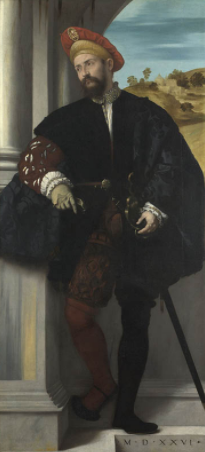

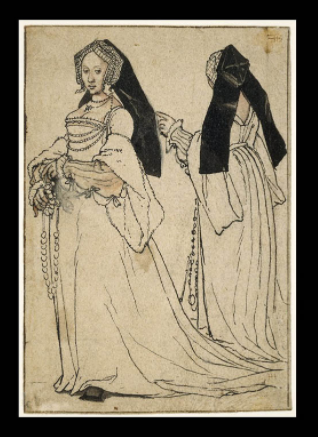

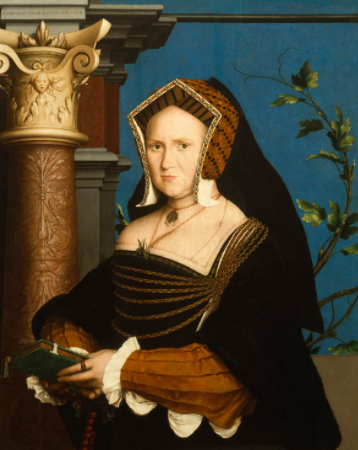

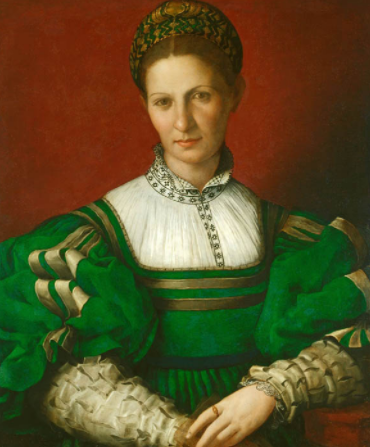

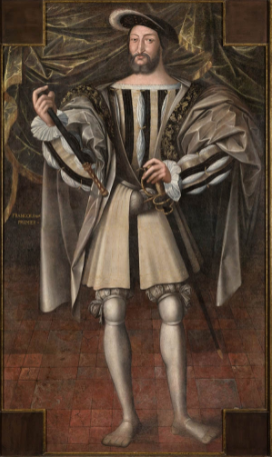

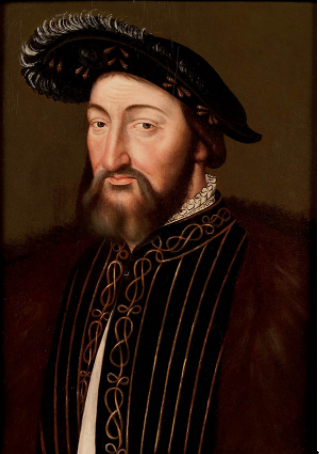







































Comments